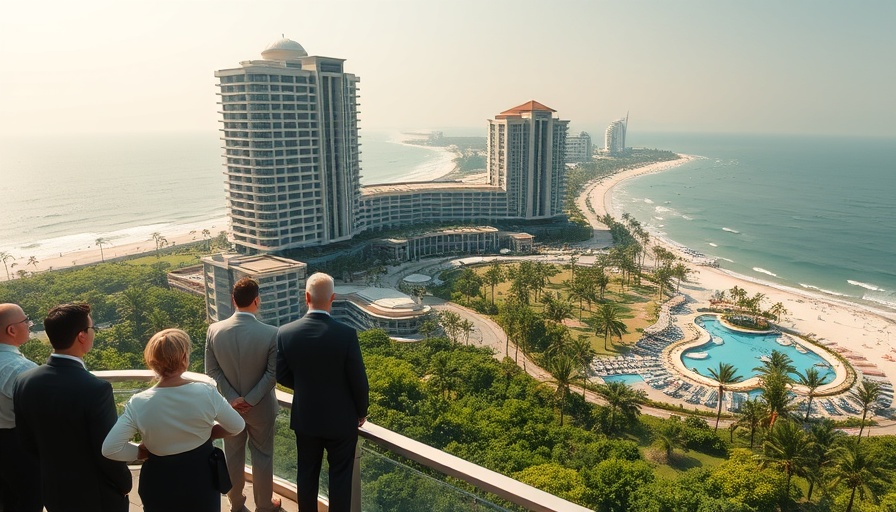
North Korea's Tourism Strategy: A New Chapter in Isolation
In an unprecedented move aimed at revitalizing its tourism sector, North Korea has inaugurated the Wonsan Kalma Coastal Tourist Zone. Spearheaded by Supreme Leader Kim Jong Un, the resort marks a significant step in the country's efforts to open its borders, albeit cautiously, to a domestic audience. While the world outside often views North Korea as a hermit state, this ambitious project symbolically demonstrates an eagerness to engage with tourism as an economic driver.
A Glimpse into Wonsan Kalma: Features and Attractions
The Wonsan Kalma resort, located on the beautiful eastern coast of North Korea, is designed to accommodate up to 20,000 visitors, showcasing the country's scenic beach over a sprawling four-kilometer stretch. According to state media, the facility will offer a diverse range of amenities, from sunbathing spots to sports and various entertainment options, illustrating a budding interest in developing leisure activities in a nation primarily known for its stringent controls on personal freedoms.
The Vision Behind the Project
Kim Jong Un’s push for a tourism revival has been ongoing for several years, reflecting a broader strategy to enhance the nation’s economic resilience through self-sufficient growth. The idea of domestic tourism is particularly relevant in light of the pandemic, as global travel restrictions have led many countries, including North Korea, to reconsider how they can utilize their resources to attract local visitors. This project, though ambitious, illustrates a larger narrative of isolates seeking to find value in their own backyard.
Opportunity or Propaganda? The Global Perspective
Critics of North Korea often label such initiatives as mere propaganda, designed to showcase a benign face to the world while glossing over human rights violations. However, some analysts argue that this resort could be a genuine attempt to pivot towards economic sustainability by drawing in both local and foreign investment. It raises questions about whether tourism could eventually serve as a bridge for more significant diplomatic engagement, although skepticism remains high in the international community.
Future Predictions: What’s Next for North Korean Tourism?
Looking ahead, the Wonsan Kalma resort could either flourish into a thriving tourist destination or serve as a cautionary tale of economic ambition restrained by political realities. If foreign tourists eventually gain access, it could provide North Korea with a much-needed influx of foreign currency and promote greater cultural exchanges. On the flip side, if the regime continues to see tourism as a threat to its authority, the resort may be limited to domestic audiences only.
Local Reactions: A Mixed Bag of Optimism and Pessimism
Within North Korea, the opening of Wonsan Kalma has sparked a mix of enthusiasm and skepticism among residents. There is optimism about the potential for job creation and service industry growth. Nevertheless, many remain wary of the government’s ability to balance domestic enjoyment with the tight grip it maintains over public life. The dichotomy of enjoying leisure in a state known for its oppressive measures presents a unique conundrum for the citizens who may be torn between excitement and apprehension.
Concluding Thoughts: The Value of Understanding North Korea’s Shift
The debut of the Wonsan Kalma resort serves as a significant marker in North Korea's ongoing narrative around tourism and economic development. For observers, understanding the implications of such initiatives extends beyond travel; it sheds light on the potential for change within a regime known for its isolationist policies. As North Korea moves forward in its tourism ambitions, the world watches closely—how it balances allure with human rights concerns will define its future trajectory.
 Add Row
Add Row  Add
Add 




 Add Row
Add Row  Add
Add 

Write A Comment